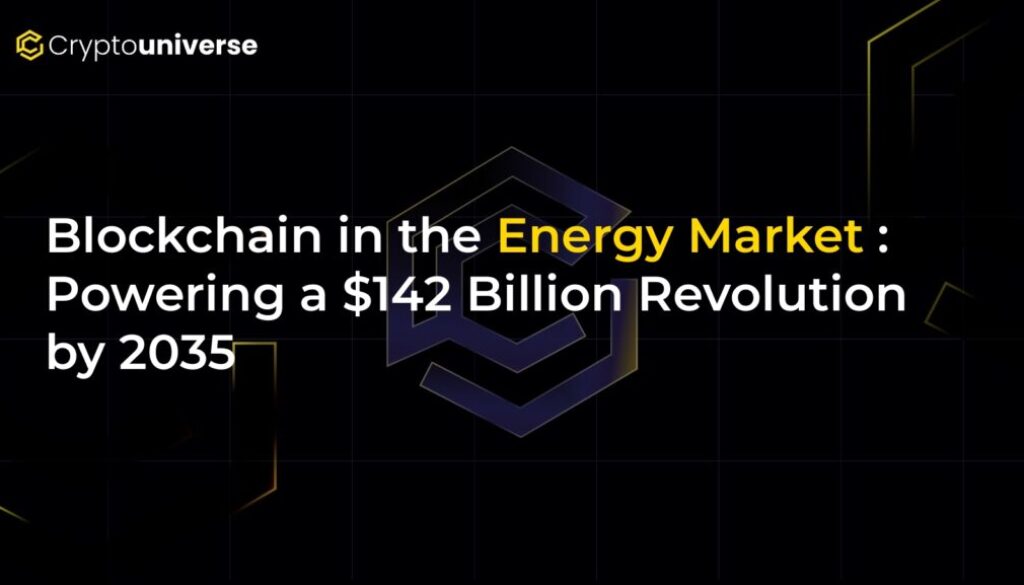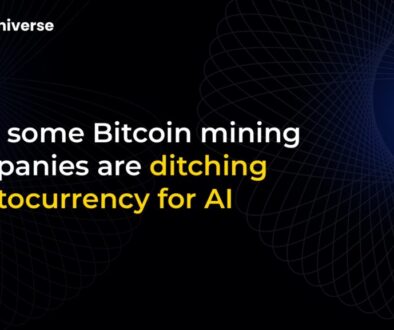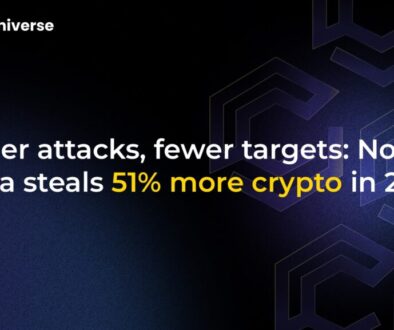Blockchain in the Energy Market: Powering a $142 Billion Revolution by 2035

Blockchain in the : Powering a $142 Billion Revolution by 2035
The global energy sector is on the brink of a monumental shift, and blockchain is the digital catalyst sparking the change. Once a complex, centralized system, the world of energy is rapidly moving towards a decentralized, transparent, and hyper-efficient future. According to a recent market analysis, the blockchain in energy market is projected to skyrocket from USD 4.4 billion in 2025 to an astonishing USD 142.3 billion by 2035, growing at a compound annual growth rate (CAGR) of 41.6%.
But what does this mean in simple terms? Imagine a world where you can sell excess solar power from your roof directly to your neighbor, where green energy is tracked with perfect accuracy, and where the entire grid operates with automated efficiency. This isn’t science fiction; it’s the future being built today on blockchain technology. In this post, we’ll explore the key drivers behind this explosive growth, the top applications transforming the industry, and the global hotspots leading the charge.
What’s Fueling the Blockchain Revolution in Energy?
The incredible growth of the blockchain in energy market isn’t happening in a vacuum. It’s being driven by a convergence of technological needs and market demands for a smarter, cleaner, and more democratic energy system.
1. The Rise of the “Prosumer” and Decentralized Grids
For decades, we’ve been passive consumers of energy. But with the rise of rooftop solar, home batteries, and small-scale wind turbines, consumers are becoming prosumers—producing and consuming their own energy. Blockchain enables these prosumers to participate in peer-to-peer (P2P) energy trading. By tokenizing excess energy, individuals can sell it securely within their community or microgrid, creating hyper-local energy marketplaces. This disintermediation reduces reliance on large, centralized utilities and empowers individuals to become active participants in the energy economy.
2. Unlocking Radical Transparency and Trust
How can you be sure the “green energy” you’re paying for is genuinely from a renewable source? Blockchain provides the answer with its immutable and transparent ledger. It’s becoming the gold standard for:
- Renewable Energy Certificates (RECs): Blockchain creates a tamper-proof audit trail for RECs, preventing double-counting and ensuring the provenance of green energy is verifiable.
- Carbon Credit Tracking: Companies can track and trade carbon offsets with unprecedented accuracy, bringing much-needed trust to ESG (Environmental, Social, and Governance) reporting.
- Supply Chain Audits: From tracking oil and gas shipments to verifying the source of materials for solar panels, blockchain ensures every step is recorded and cannot be altered.
3. Automating Efficiency with Smart Contracts
Smart contracts—self-executing contracts with the terms of the agreement directly written into code—are the engine of automation in the energy sector. They streamline complex processes, reduce administrative costs, and eliminate the need for intermediaries. Use cases include automating billing for EV charging stations, executing complex Power Purchase Agreements (PPAs) instantly, and managing grid transactions in real-time without human intervention.
Top Applications: Where Blockchain is Making its Mark
While the potential is vast, a few key areas are already seeing significant adoption and are expected to dominate the market.
Power and Smart Grid Management
Leading the charge, the power segment is set to command 28.6% of the market share in 2025. Utilities are leveraging blockchain to create next-generation smart grids that can dynamically balance loads, integrate fluctuating renewable sources like wind and solar, and automate demand-response systems. This leads to a more stable, resilient, and efficient electricity grid for everyone.
Peer-to-Peer (P2P) Energy Trading
As mentioned, P2P trading is a game-changer. Companies like Power Ledger have already launched successful pilots in India and other countries, proving that community-based energy markets are not just viable but highly effective. This application is turning passive consumers into active market players and is a core driver of the decentralized energy movement.
Sustainability and EV Charging
Blockchain is critical for verifying and tokenizing green energy attributes. This is especially important for the booming Electric Vehicle (EV) market. Blockchain can streamline the entire EV charging process, from authenticating a vehicle and its owner to processing micropayments for electricity, all while ensuring the energy used is verifiably green.
A Global Look at the Blockchain Energy Race
The adoption of blockchain in energy varies significantly across the globe, creating a fascinating landscape of innovation hotspots.
- China (56.2% CAGR): Leading the world, China’s growth is fueled by direct state intervention. The nation is aggressively integrating blockchain into grid tokenization, carbon market digitization, and industrial microgrids as part of its national intelligence and emissions goals.
- India (52.0% CAGR): India’s rapid growth is tied to its focus on decentralized power. With successful P2P solar trading pilots and a push for transparency in subsidy disbursement, the country is quickly becoming a leader in grassroots blockchain adoption.
- Germany (47.8% CAGR): A leader in the OECD, Germany is using regulatory sandboxes to test blockchain for energy certificates, virtual power plants, and grid ancillary services.
- United Kingdom (39.5% CAGR): The UK is making steady progress, backed by initiatives from regulators like Ofgem. Innovation clusters are focused on P2P trading and REC tokenization, particularly with offshore wind farms.
- USA (36.4% CAGR): Growth in the US has been slower due to a patchwork of state regulations. However, private utilities are exploring consortiums, and investors are showing keen interest in blockchain for EV charging optimization and REC validation.
Key Players: From Tech Giants to Crypto Natives
The competitive landscape is a vibrant mix of established tech giants and agile blockchain startups.
Enterprise leaders like IBM, SAP, and Oracle are providing the foundational blockchain-as-a-service (BaaS) platforms for large utilities. In a major move, Enact Systems recently integrated Oracle Blockchain to tokenize RECs for its solar software platform.
However, the real excitement is coming from the crypto space. The Blockchain for Energy (B4E) consortium, whose members include energy titans like Chevron, ExxonMobil, and Saudi Aramco, is now building on the energy-efficient Hedera network. Meanwhile, projects like Energy Web are building dedicated blockchain platforms on Polkadot specifically for the energy sector.
Challenges and the Road Ahead
No revolution is without its challenges. The primary concern often leveled at blockchain is its energy consumption, largely due to Bitcoin’s Proof-of-Work model. However, it’s crucial to note that the vast majority of platforms being deployed in the energy sector, like Hedera and Polkadot, use highly energy-efficient consensus mechanisms like Proof-of-Stake. These systems use a tiny fraction of the energy, making them ideal for building a sustainable future.
Regulatory uncertainty and the need for interoperability standards remain hurdles, but as the technology matures and its benefits become undeniable, these are rapidly being addressed.
Conclusion: Powering the Future, One Block at a Time
The convergence of blockchain and energy is no longer a futuristic concept; it’s a present-day reality with a clear trajectory toward transforming a multi-trillion-dollar industry. With a projected market value of $142.3 billion by 2035, blockchain is set to become the digital backbone of a cleaner, smarter, and more democratized global energy system. By enabling trust, transparency, and automation, it is empowering individuals, securing our grids, and paving the way for a truly sustainable energy future.


